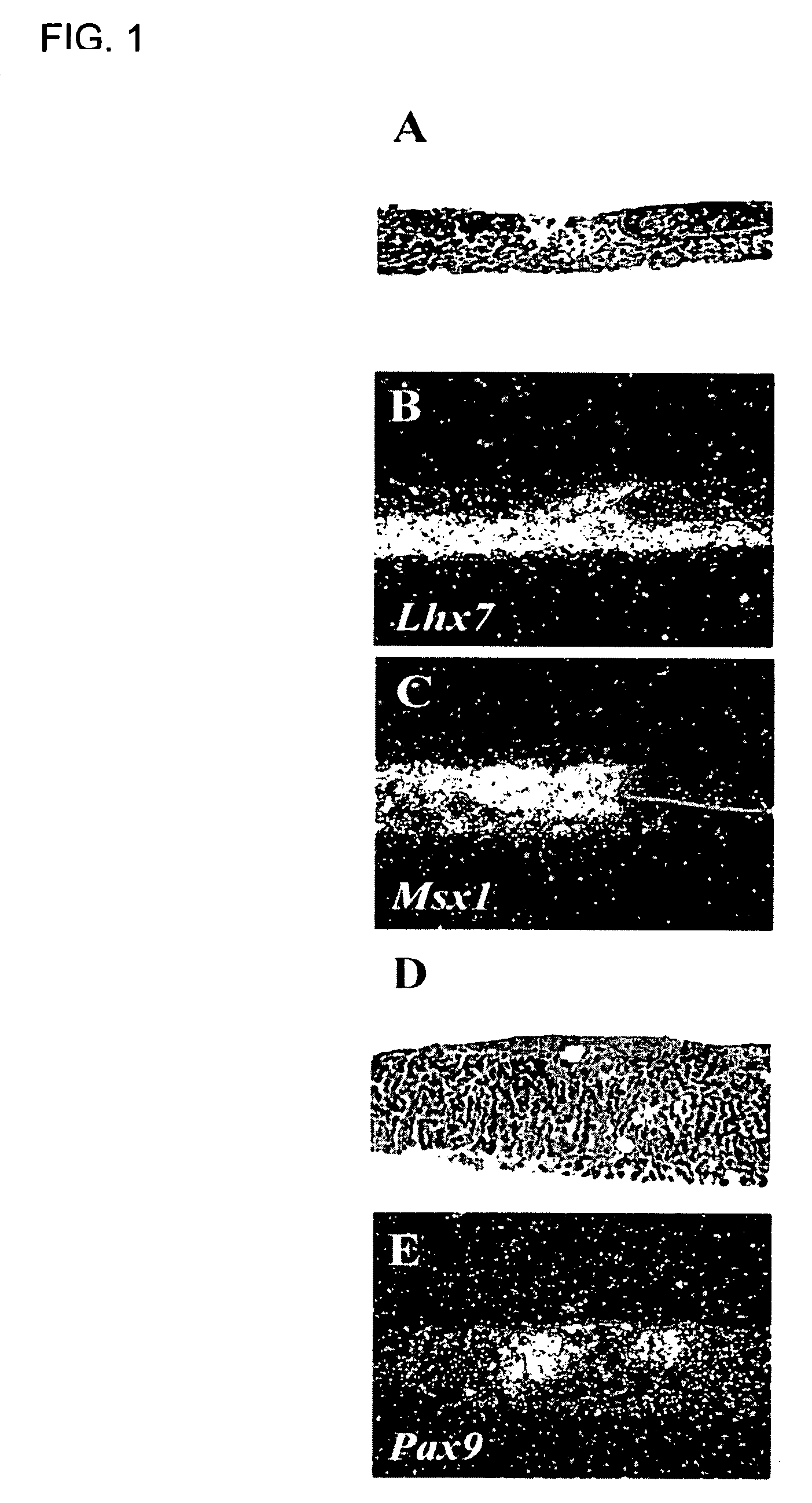Bone regeneration
a bone regeneration and alveolar bone technology, applied in the field of alveolar bone regeneration, can solve the problems of denture retention problems, many patients experience great difficulty in retaining dentures in position, and many people experience tooth loss and require dentures, so as to facilitate denture retention and stimulate new tooth formation
- Summary
- Abstract
- Description
- Claims
- Application Information
AI Technical Summary
Benefits of technology
Problems solved by technology
Method used
Image
Examples
examples
[0089]The following examples are included to demonstrate preferred embodiments of the invention. It should be appreciated by those of skill in the art that the techniques disclosed in the examples which follow represent techniques discovered by the inventor to function well in the practice of the invention, and thus can be considered to constitute preferred modes for its practice. However, those of skill in the art should, in light of the present disclosure, appreciate that many changes can be made in the specific embodiments which are disclosed and still obtain a like or similar result without departing from the spirit and scope of the invention.
Materials & Methods
Culture of Non-Dental Cells
[0090]Feeder-independent mouse embryonic stem cells (E14.2) were cultured in D-MEM with 103 U / ml of leukaemia inhibitory factor, buffalo rat liver cell-conditional medium, 200 mM L-Glutamine, non-essential amino acid, 2-mercaptoethanol. Medium was changed every day and ES cells were passaged eve...
PUM
| Property | Measurement | Unit |
|---|---|---|
| time | aaaaa | aaaaa |
| time | aaaaa | aaaaa |
| time | aaaaa | aaaaa |
Abstract
Description
Claims
Application Information
 Login to View More
Login to View More - R&D
- Intellectual Property
- Life Sciences
- Materials
- Tech Scout
- Unparalleled Data Quality
- Higher Quality Content
- 60% Fewer Hallucinations
Browse by: Latest US Patents, China's latest patents, Technical Efficacy Thesaurus, Application Domain, Technology Topic, Popular Technical Reports.
© 2025 PatSnap. All rights reserved.Legal|Privacy policy|Modern Slavery Act Transparency Statement|Sitemap|About US| Contact US: help@patsnap.com



